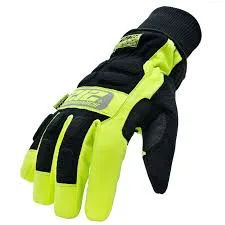Safety Standards for ANSI Z89.1 Compliant Helmets and Their Importance in Workplace Protection
Understanding ANSI Z89.1 Standards for Safety Helmets
Safety helmets are crucial in ensuring the protection of workers in various industrial environments. The American National Standards Institute (ANSI) has established guidelines for safety helmets through the standard ANSI Z89.1. This standard specifies the performance requirements, testing methods, and classifications for industrial head protection devices. In this article, we will delve into the importance of these standards, the different types of safety helmets, and how they contribute to worker safety.
The Importance of ANSI Z89.1
The ANSI Z89.1 standard provides a benchmark for safety helmets used in various applications, including construction, manufacturing, and mining. As workplace safety is paramount, these standards ensure that helmets meet specific criteria for impact resistance, electrical insulation, and flammability. Compliance with ANSI Z89.1 helps employers protect their workers from head injuries that can result from falling objects, bumping into stationary objects, or electrical hazards.
The standard is periodically updated to reflect advancements in technology and changes in the workplace environment. The latest revision emphasizes improved safety features and increased testing requirements. This adaptation to new challenges underscores the commitment of ANSI to maintain workplace safety and promote the use of reliable protective equipment.
Types of Safety Helmets
The ANSI Z89
.1 standard classifies safety helmets into different categories based on their intended use and the level of protection they offer. The two primary classifications are Type I and Type II- Type I Helmets These helmets are designed to provide protection primarily from impacts to the top of the head. They are typically used in environments where the risk of falling object injuries is prevalent, such as construction sites.
- Type II Helmets In contrast, Type II helmets are designed to protect against impacts from both the top and side of the head. These helmets are often used in situations where there is a risk of lateral impact, such as in utility work or industrial settings.
Additionally, safety helmets are further categorized based on electrical protection (Classes E, G, and C). Class E helmets are tested to withstand high-voltage electrical hazards, Class G helmets offer general protection against low-voltage electricity, while Class C helmets provide no electrical protection but are often lighter and more comfortable.
ansi z89 1 safety helmet

Essential Features of Safety Helmets
Beyond their classification, safety helmets must possess certain essential features as outlined by ANSI Z89.1. These features may include
- Impact Resistance Helmets must endure impacts from falling objects without breaking or allowing significant force to reach the skull.
- Electrical Insulation This feature is crucial for helmets classified under Group E and indicates their ability to resist electrical current.
- Flame Resistance Helmets must be made from materials that can withstand certain levels of heat and ignition to protect workers in high-heat environments.
- Adjustable Suspension Systems A proper fit is essential for maximum protection, and therefore, helmets should have adjustable suspension systems to accommodate different head sizes.
- Weight and Comfort As workers often wear helmets for extended periods, it’s essential that they are lightweight and comfortable to minimize fatigue.
Conclusion
In summary, the ANSI Z89.1 standard is a critical framework for ensuring the safety and protection of workers through the proper use of safety helmets. By adhering to these standards, employers can significantly reduce the risk of head injuries in hazardous work environments. It is essential for workers to choose the appropriate type of helmet based on their specific job requirements and ensure that it meets the ANSI Z89.1 specifications. Safety helmets, when selected and used correctly, serve as a vital line of defense, enabling workers to perform their tasks with greater confidence and security. As industries evolve and new risks emerge, ongoing awareness and adherence to safety standards like ANSI Z89.1 remain crucial in maintaining workplace safety.
-
Top HDPE Safety Helmets - Lightweight, Durable Head Protection
NewsAug.01,2025
-
Top AI Safety Clothing with GPT-4 Turbo | Smart Protection
NewsJul.31,2025
-
Face Shield Safety Helmet with GPT-4 Turbo AI Safety
NewsJul.31,2025
-
CE Working Clothing for Construction & Welding Safety
NewsJul.30,2025
-
Premium Safety Helmet with Visor for Construction & Industrial Use
NewsJul.29,2025
-
High-Quality CE Working Clothing for Safety and Construction
NewsJul.29,2025
